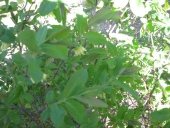
 7
7




 3
3




 3
3




 4
4




 1
1




 2
2





 3
3




 3
3




 1
1




 1
1




Bill Whipple wrote:I have had limited success grafting honeyberries. Maybe 5 successful grafts over 50 attempts. Some grafts are 5 years old now. Not sure if its compatability, or the fact that the bark is so thin and fragile? ...or it maybe timing? I am far from giving up as you will read.
Down here in WV im experimenting with some of the new genetics coming out and have had some luck with Blizzard last year producing fruit in 2 years on a graft with robust growth. If we can find selections that are closely related to our invasive species, that would improve our chances. I am actively growing out seed from plants that have taken to grafting and will start to graft from those when they are big enough to harvest scion. From there i hope to genetically select the most compatatable individuals.
The biggest tip i can offer mechanically is a trick i figured out last year wherein before i rind graft, i wrap the area with masking tape before i cut the trunk. This supports the extremely thin bark from tearing and will hold the scion. I can also get good pressure to hold the scion firmly in place.
I usually primp my bushes a couple of years ahead as well. The early growth of a plant will be wild and then the plant will send up straight leaders in the middle to get sun after about 3 years. I will cut all the early scraggly growth and give that central leader a year or two to establish apical dominance and all the plants energy. This will improve my odds as well.
We arent far from having extensive naturalized honeyberry plantations with no hole digging, irrigation, rabbit protection, etc.




If you fail to plan, you plan to fail. -B. Franklin

|
Maybe he went home and went to bed. And took this tiny ad with him:
The new kickstarter is now live!
https://www.kickstarter.com/projects/paulwheaton/garden-cards
|




